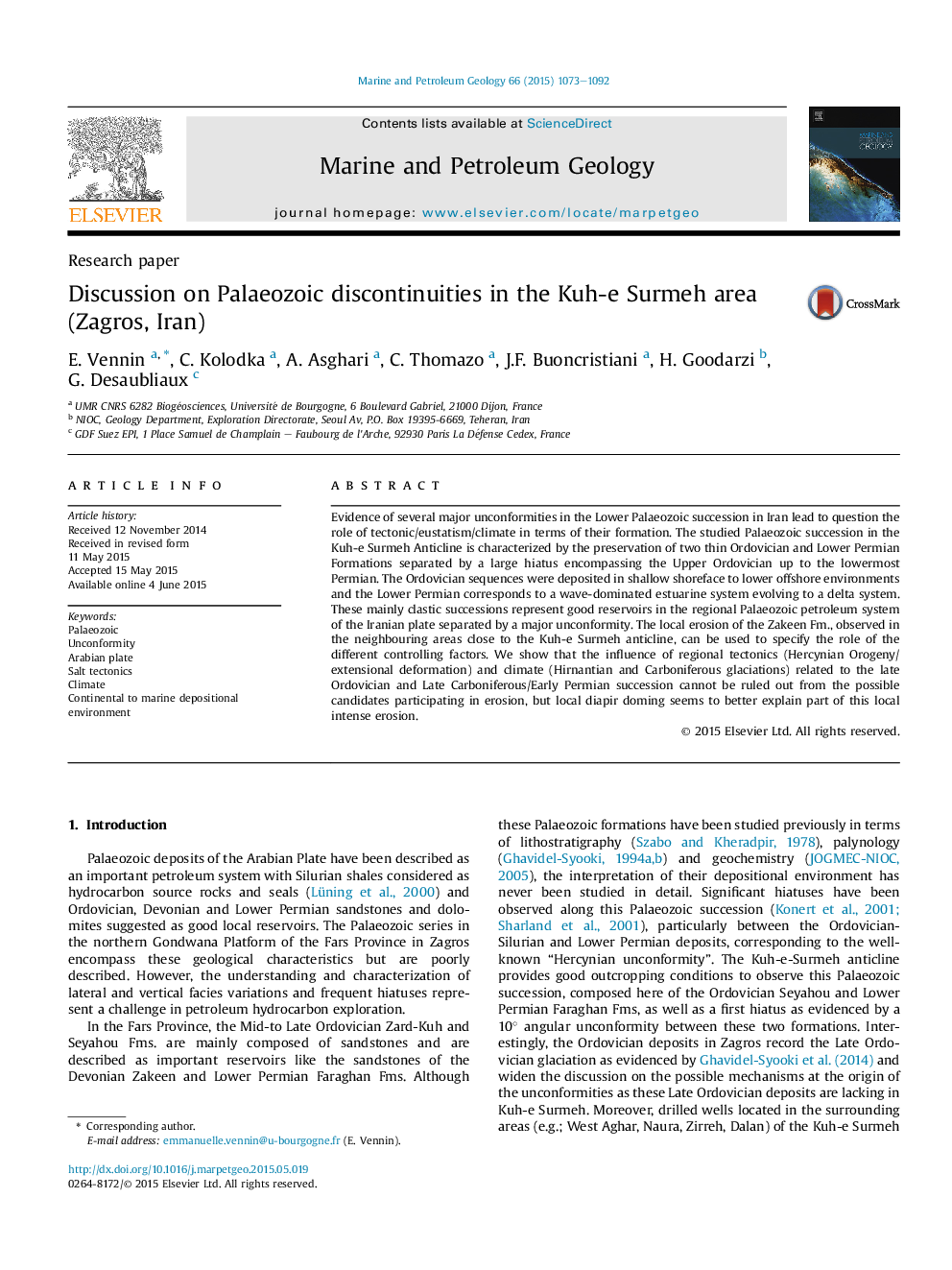| Article ID | Journal | Published Year | Pages | File Type |
|---|---|---|---|---|
| 4695509 | Marine and Petroleum Geology | 2015 | 20 Pages |
Evidence of several major unconformities in the Lower Palaeozoic succession in Iran lead to question the role of tectonic/eustatism/climate in terms of their formation. The studied Palaeozoic succession in the Kuh-e Surmeh Anticline is characterized by the preservation of two thin Ordovician and Lower Permian Formations separated by a large hiatus encompassing the Upper Ordovician up to the lowermost Permian. The Ordovician sequences were deposited in shallow shoreface to lower offshore environments and the Lower Permian corresponds to a wave-dominated estuarine system evolving to a delta system. These mainly clastic successions represent good reservoirs in the regional Palaeozoic petroleum system of the Iranian plate separated by a major unconformity. The local erosion of the Zakeen Fm., observed in the neighbouring areas close to the Kuh-e Surmeh anticline, can be used to specify the role of the different controlling factors. We show that the influence of regional tectonics (Hercynian Orogeny/extensional deformation) and climate (Hirnantian and Carboniferous glaciations) related to the late Ordovician and Late Carboniferous/Early Permian succession cannot be ruled out from the possible candidates participating in erosion, but local diapir doming seems to better explain part of this local intense erosion.
